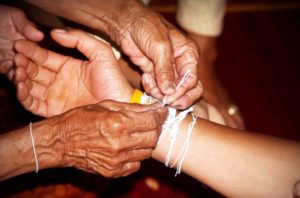
Younger and older people spending time together might make the best age fighters.
Earlier this year, US Surgeon General Vivek Murthy announced ‘social isolation’ as one of the biggest public threats. Loneliness creates the same negative impact on lifespan as smoking 15 cigarettes per day.
Social isolation puts older adults at peril for cognitive decline, cardiovascular disease and even death while Blue Zones — world-wide hotspots for better, longer living — show social connectedness as a key factor in longevity.
To learn how to encourage social connections in aging adults, Irene Park, of the Buck Institute, interviewed Marc Freedman, CEO of Encore.org, a non-profit focused on senior social engagement through meaningful work and author of How To Live Forever.
Despite new tools for social interaction, 43 percent of seniors often feel lonely, a 2012 study shows. It’s partly due to what Freedman calls “Age Apartheid,” when younger and older family members feel they have less in common because of the physical distance between them.
READ: SOCIAL MEDIA: SENIORS’ BIGGEST FRENEMY
He recommends creating new social institutions that integrate generations instead of separating them to get out of an “age bubble.” Efficient communication has replaced effective, interconnected ways of keeping multi-generational engagement.
“We need more proximity and more vehicles to connect the generations in housing, neighborhoods workplaces and educational institutions,” Freedman said.
In his book, Freedman suggests reducing isolation by inter-generational interaction even outside of their own families. Mentoring younger people is a way for older adults to have a sense of responsibility and meaning.
One of Encore’s project is ‘Nuns and Nones’ where nuns and millennials with no religious preference connect through in-person conversations and co-residency.
READ: AGING & TECH: POLAR OPPOSITES OR THE FUTURE?
Dr. Linda Fried, the Dean of Columbia’s University Mailman School of Public Health, wishes she could prescribe social interaction just like they do for medicines for older people.
“So many of her older patients had headaches and pains but the primary things ailing them were lack of purpose, lack of connection and a reason to get up in the morning,” Freedman said.










